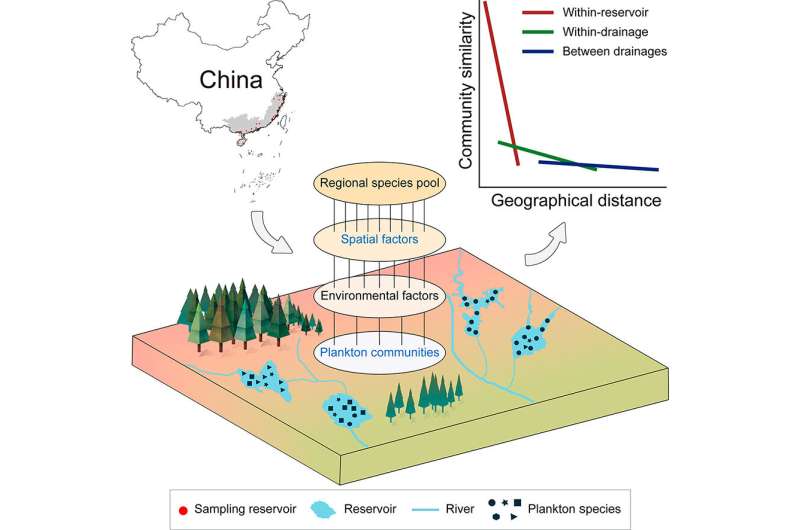Researchers investigate spatial distribution of reservoir plankton communities in Southeast China

A research team led by Prof. Yang Jun from the Institute of Urban Environment of the Chinese Academy of Sciences has explored the spatial distribution of phytoplankton and zooplankton communities in 24 reservoirs in Southeast China.
Their findings were published in Science of the Total Environment.
Plankton are the major primary producers in reservoir ecosystems and play crucial roles in matter cycling and energy flow across trophic levels.
Distance-decay relationships are the most well-established biogeographical patterns in describing species spatial distribution in ecology. The decay of community similarity with geographical distance has been recognized by ecologists for several decades.
In previous studies, researchers found distance-decay relationships in animals, plants, bacteria and fungi communities in different ecosystems. However, there is still a lack of research on the spatial distribution of plankton communities in lakes or reservoirs at different scales, and the understanding of the driving factors and community assembly mechanisms of plankton at a large spatial scale is limited.
Based on the microscope-identification data, the researchers investigated the spatial distribution patterns and community assembly mechanism through methods of distance-decay relationship, structural equation modeling (SEM) and dispersal-niche continuum index (DNCI).
Distance-decay relationships were divided into three scales (within-reservoir, within-drainage but between reservoirs, and between drainages) based on whether the pairwise sampling sites were from the same reservoir or drainage (catchment).
The researchers found that the spatial distribution of phytoplankton and zooplankton communities was scale-dependent. There were significant distance decay relationships of phytoplankton and zooplankton at the three spatial scales, and the slopes of distance decay became shallower with the expansion of the spatial scale.
Moreover, the study provided evidence that both spatial and environmental variables contributed to the distance-decay relationships of plankton communities, and the impact of spatial factors was overall greater.
"The dispersal-related processes contributed more to the biogeography of reservoir plankton than environmental filtering," said Prof. Yang.
More information: Lei Jin et al, The scale-dependence of spatial distribution of reservoir plankton communities in subtropical and tropical China, Science of The Total Environment (2022). DOI: 10.1016/j.scitotenv.2022.157179
Journal information: Science of the Total Environment
Provided by Chinese Academy of Sciences


















